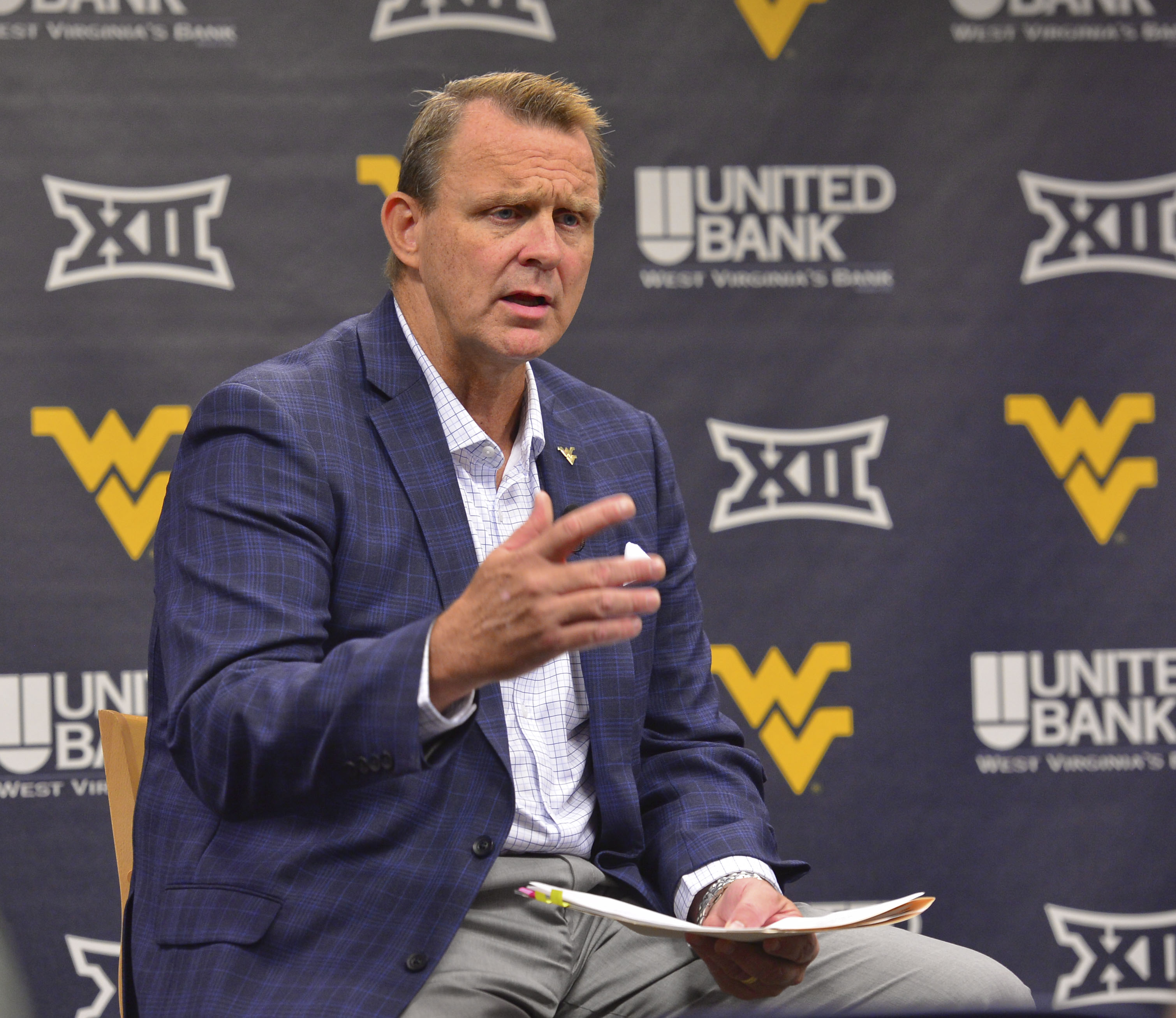MORGANTOWN, W.Va. — West Virginia athletic director Shane Lyons will be in a key position when it comes to the 2020 college football season and what it will — or could — look like when teams kick off.
Lyons is the chairman of the NCAA’s Division I Football Oversight Committee, which “enhances the development of the sport and make recommendations related to regular season and postseason football,” according to the NCAA’s website. “The committee will prioritize enhancement of the student-athlete educational experience (academically and athletically), and in doing so, promote student-athletes’ personal growth and leadership development. It will work in conjunction with appropriate governance entities to provide solutions to issues impacting the health and safety of football student-athletes” at the FBS and FCS levels.
Perhaps Lyons’ role is no more important than the present due to the COVID-19 pandemic and the upcoming college football season hanging in the balance. The committee is filled with other athletic directors and other prominent figures within college football from across the country. With different regions having different responses to coronavirus, it’s creating new challenges to get college football started at the end of August.
“We understand different states are going to open up at different times,” Lyons said May 8 via a Zoom meeting. “What does that look like? Where does the competitive equity come into play? We had some time to talk about different models, anywhere from a six- to four-week model, six weeks being optimal, four weeks being the minimum.”
To use WVU as an example, the Mountaineers open their season Sept. 5 against Florida State in Atlanta. Lyons’ hope is players can return to campus and resume normal activities — weight-lifting, practices, team meetings, etc. — four-six weeks before the first game with adequate testing for coronavirus. The college football season overall opens Aug. 29, so under the plan, Aug. 1 would be the latest teams can resume training if the season hopes to begin on time.
Lyons also mentioned the committee and Big 12 would be naive to avoid other possibilities, such as playing a conference-only schedule, a split schedule from fall to spring.
But much of it goes back to how schools in area with stricter guidelines be able to come back for in-person activities. The California State University system announced it will not open for most on-campus classes this fall, so the PAC-12 programs, for example, will have a drastically more difficult time getting going than those in the Big 12, as it stands today.
Lyons was a guest on the NCAA Social Series last Friday, along with NCAA reporter Andy Katz, NCAA Chief Medical Officer Dr. Brian Hainline and ESPN analyst Kirk Herbstreit, to discuss the current situation with the college football season.
“The California schools, especially with the news that came out this week, that raises a lot of eyebrows,” Lyons said. “How is this going to work? Maybe there will be inequalities. We may start football without some schools starting at that point. There isn’t one person who is ultimately going to make the decision (in playing). It is a collaborative effort among the conferences. The NCAA, the medical experts, local health departments, there are a lot of different entities that are going to take part in this.
“Our group can come up with recommendations and thoughts, but when it really boils down to what the season looks like, I think there are going to be those situations where there’s not going to be 100% participation.”
Hainline added important details, including players will need to quarantine 14 days if they test positive, and then who that player came into close contact with will need to be evaluated. Shared equipment like footballs and water bottles will also need to be player or group specific.
Lastly, with other sports such as NASCAR and UFC in the United States, baseball in South Korea and soccer in Europe beginning without fans in the stands, many are trying to figure out the best way to allow fans in the stands come August for college football.
“First you imagine a ‘no fans’ scenario,” Hainline said. “You first create an inner bubble, which is players and those that are in close contact with the players. Then there is an outer bubble of people who are necessary to run the event but they are not in the same close quarters.
“You first create an inner bubble, which is players and those that are in close contact with the players,” Hainline said. “Then there is an outer bubble of people who are necessary to run the event, but they are not in the same close quarters. If you can get those two down and you have a wide open place like a football stadium, it is actually a little bit easier when you perfect the core foundation of this to imagine having fans. Not 100,000 fans, but maybe you start building on that.”




